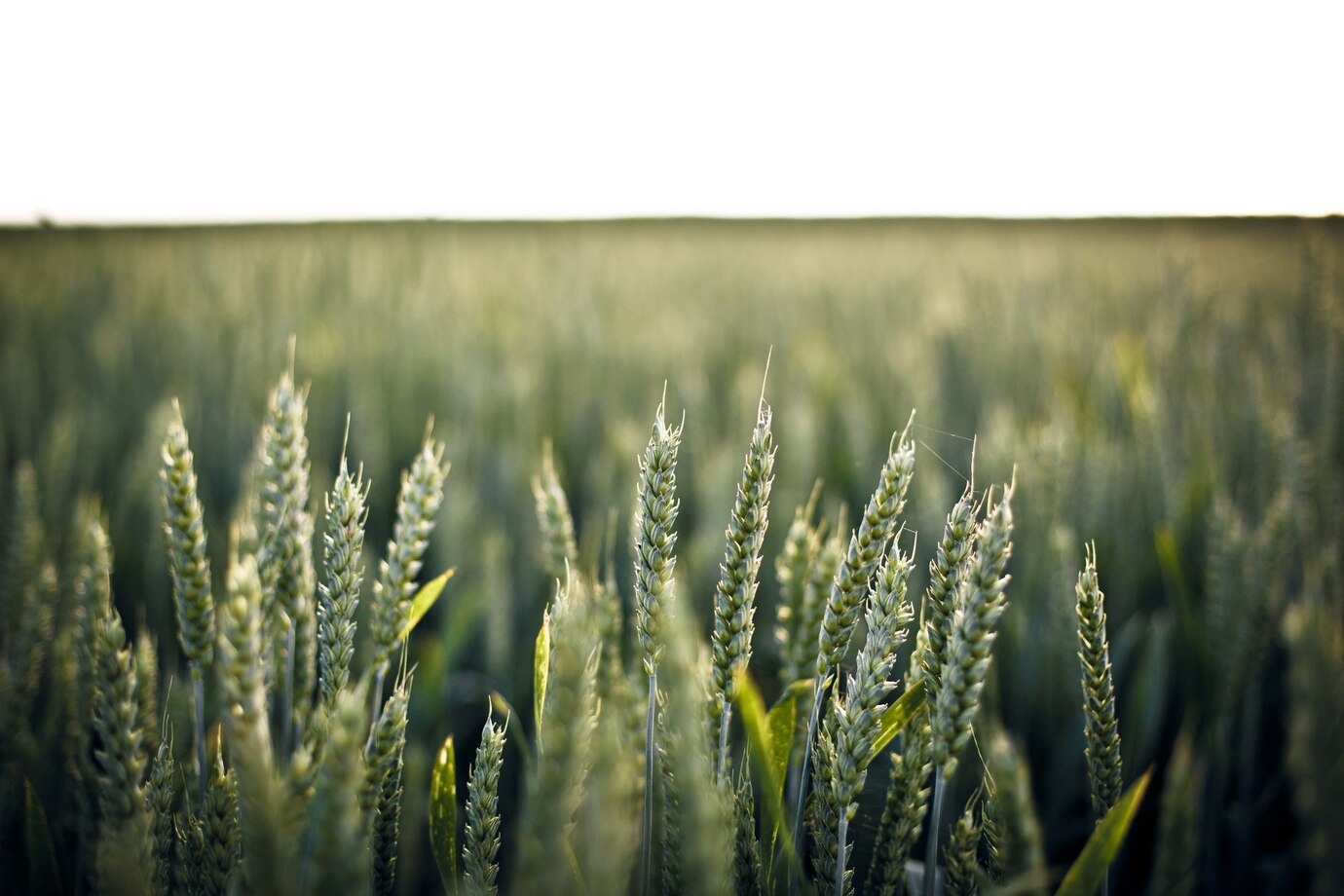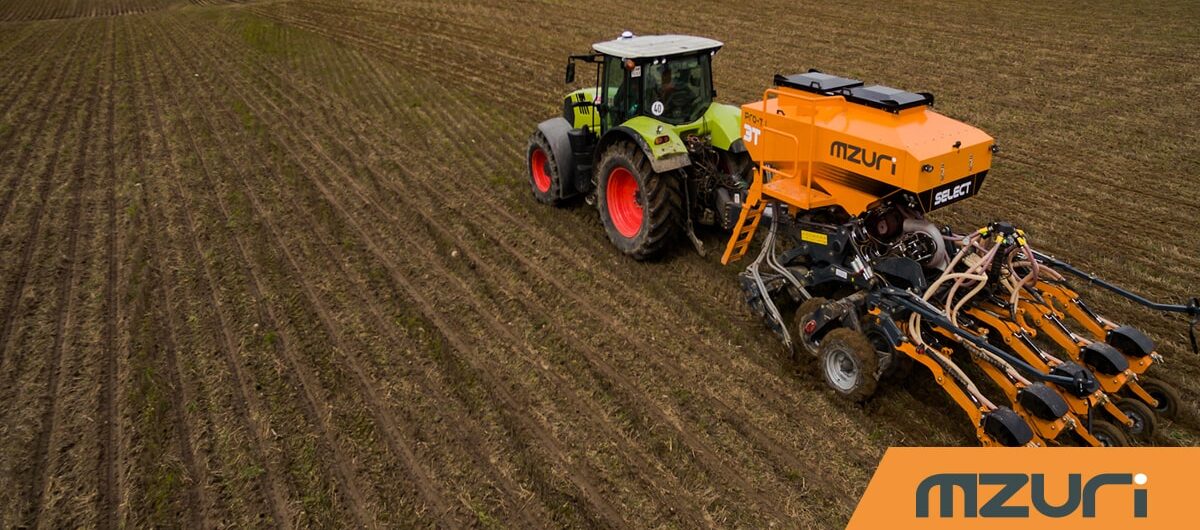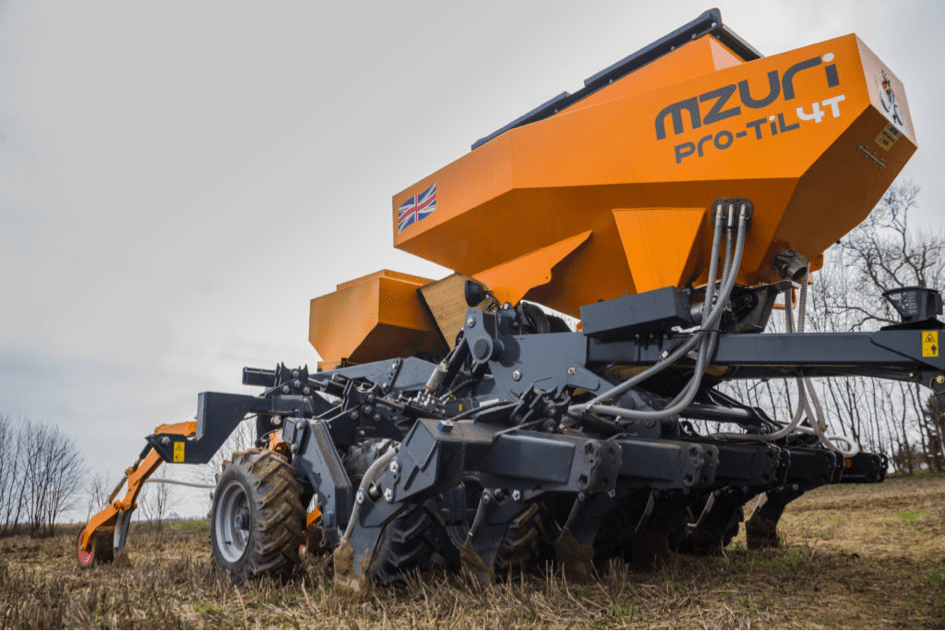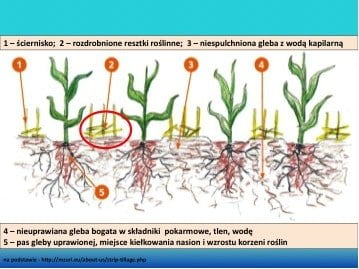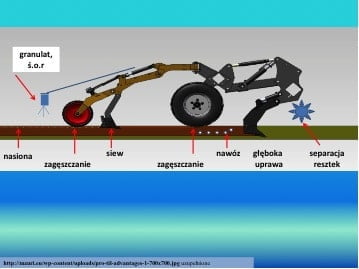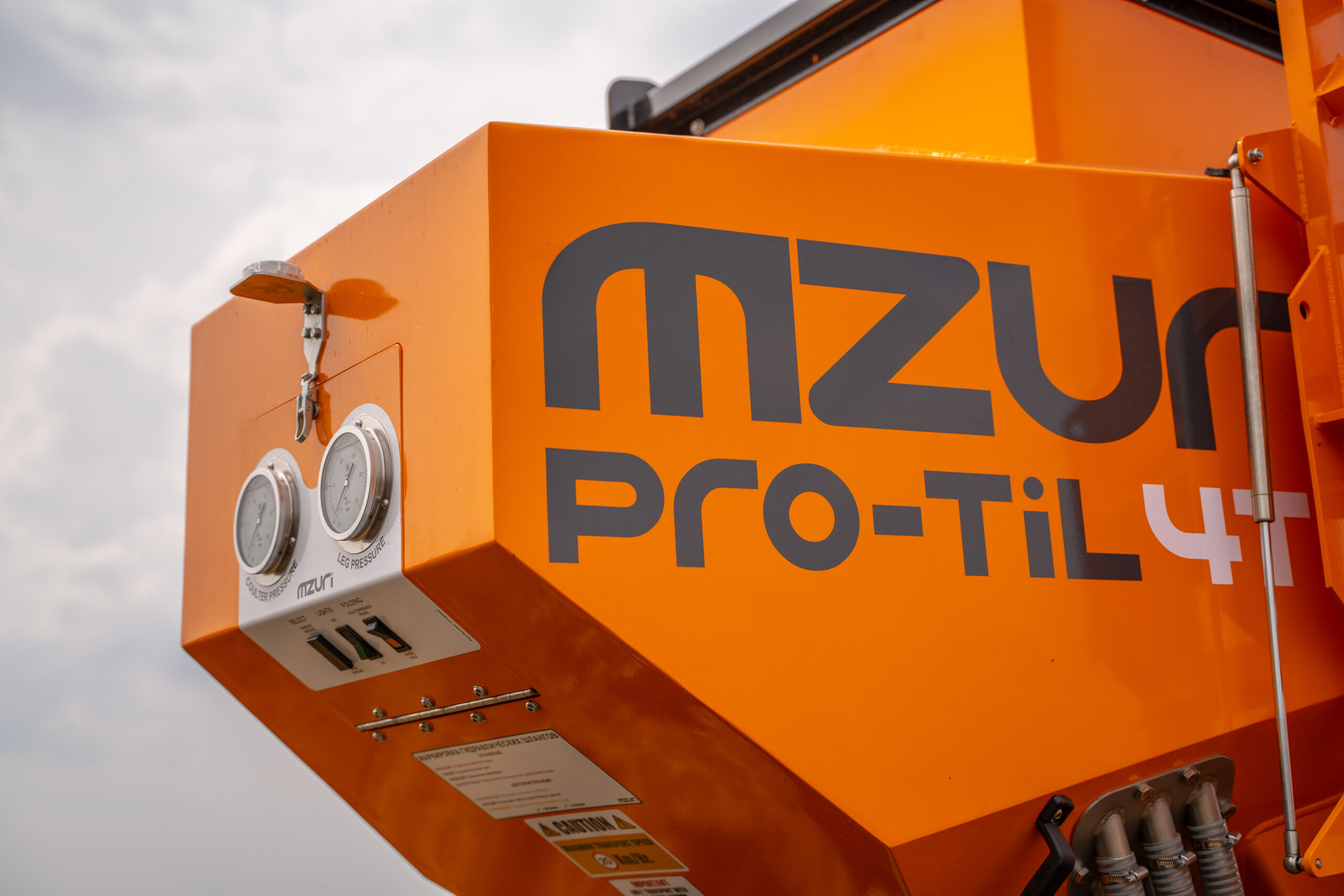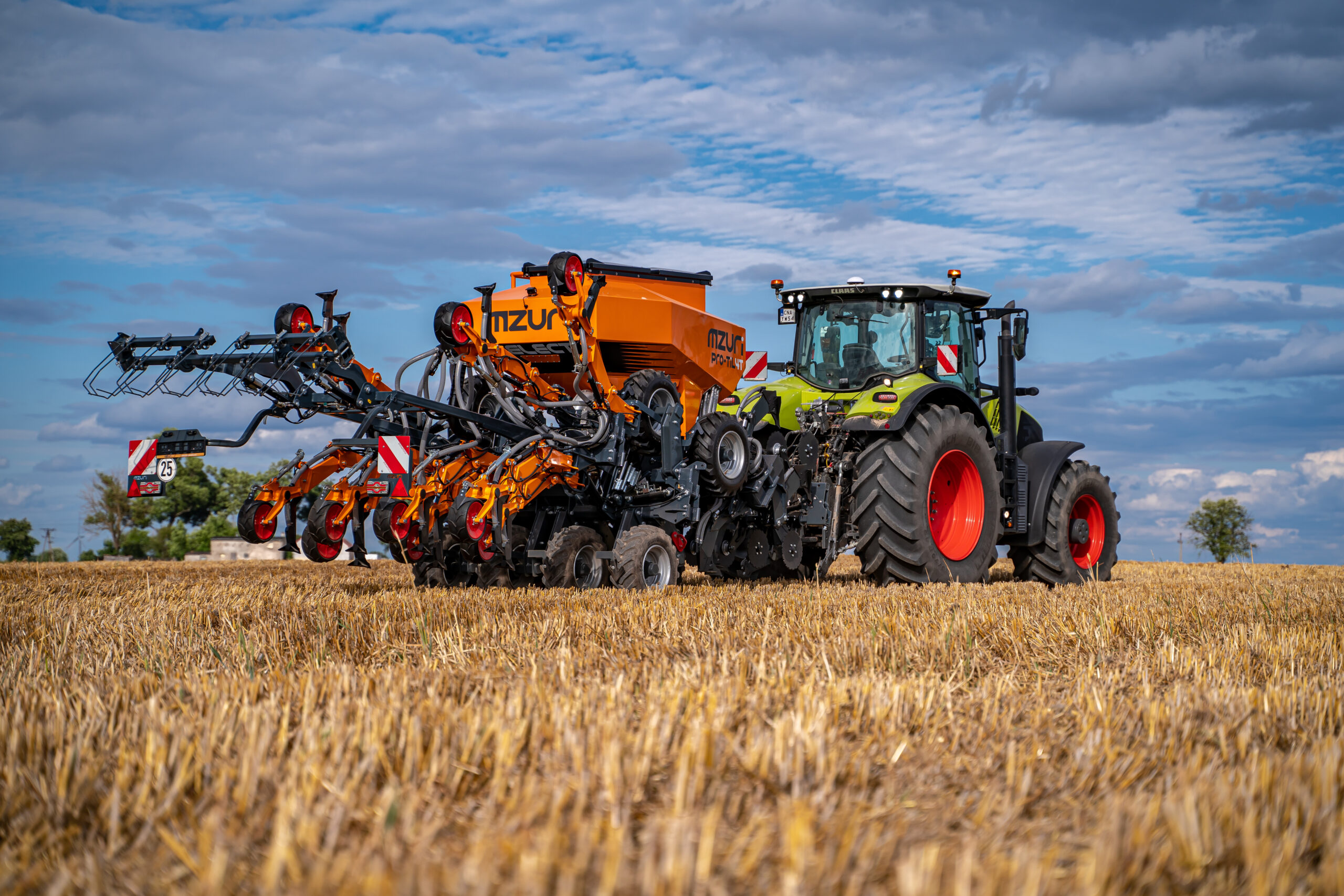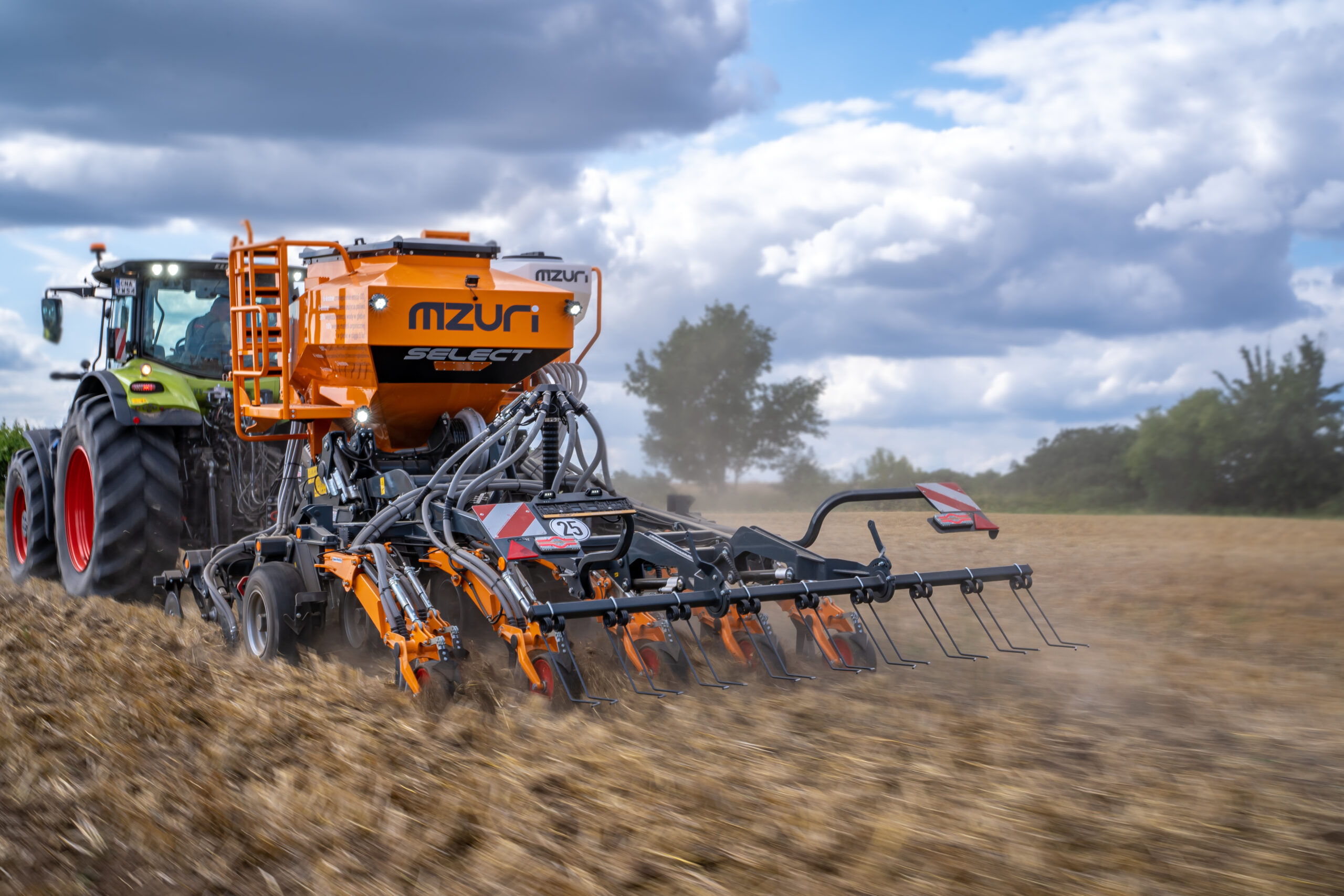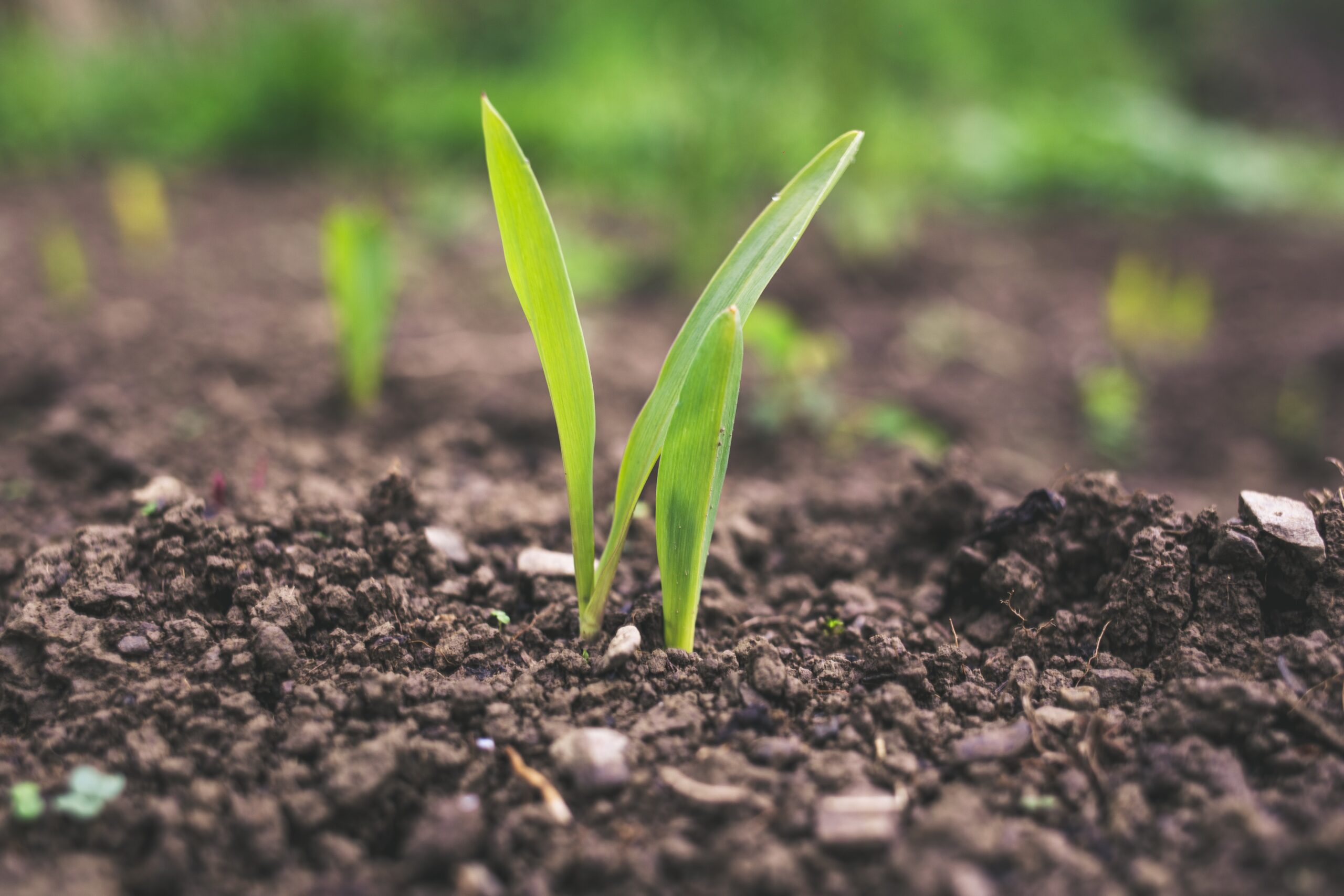In agricultural practice, only economically measurable and/or organisationally advantageous simplifications of conventional tillage are accepted. What is important here is not only their current size, but also their impact on future soil productivity and the wider environment. Currently, strip tillage appears to be such a tillage method. Its essence involves the cultivation of narrow strips of land in which crop seeds are sown. In the interrows, which make at least 2/3 of the field, the soil is not cultivated, as in zero tillage and direct sowing. The strips of tilled soil occupy no more than 1/3 of the area, on which an average of 50-75% of crop residue remains. Strip tillage combines the advantages of deep cultivation, which prepares the soil for growth and the physiological activity of the plant root systems, with the advantages of direct sowing, among other things, mulch present between rows and a significant reduction in inputs (Fig. 2). In a single pass with the modern implements not only can you cultivate land in this way, but also apply mineral fertilisers, and sow crop seeds and micro granules, some plant protection agents or intercrop seeds. Hence, such field preparation and seeding can be called a “single pass technology” (Fig. 3).
The Mzuri Pro-Til technology can be applied to traditionally widely spaced crops, such as maize and root crops, as well as to rape, and especially to cereals. In the case of the latter, which are cultivated at a narrow row spacing, it is very important that harvest residue, e.g. straw, are well shredded and spread over the entire field surface, and not only within the working width of the combine’s cleaning and shaking elements. Otherwise, they can hinder tillage and seeding, leading to negative opinions about strip tillage among farmers. Therefore, crop residue after strip-till have to be kept mostly in the interrows, where they perform beneficial tasks such as protecting the soil from degradation and water loss. Being away from the rows, they enable precise seed drilling and fast and uniform plant emergence. This condition of the soil after a single pass of the Mzuri implement combining tillage, pre-seed fertilisation and seed drilling is a prerequisite for the good condition of the crop in the further vegetation period.
The design of the Mzuri machine makes it possible to achieve favourable conditions for plant growth and yield with just one machine. The loosening tines may be preceded by assemblies that cut through the plant material. They are particularly useful when long, limp, non-brittle plant stems remain after harvesting a pre-crop or as a result of intercropping. The cut pushes the residue back into the inter-rows and reduces the risk of it accumulating on the machine’s tillage tines. The tillage tines work with mineral fertiliser application attachments. The fertiliser is pneumatically fed from a hopper that also has a seed chamber. Depending on the dose, its capacity ensures continuous work on several or more hectares. The tine design enables deep loosening of a narrow strip of land without “lifting” very moist soil from deeper layers to the surface. This protects the scarified layer from crushing and crusting, which has a beneficial effect on plant emergence. Each loosening part is followed by a tyre wheel. Structurally, it plays a traction and driving role, while from the agricultural perspective it recompacts the soil. The wheels compact soil that has been excessively loosened and aerated by the loosening tines, as they “close” the gaps after they have passed. These gaps are not really wide, but on heavy clay or loam soils they will not close on their own. In such conditions, plant roots without contact with the soil could not take up water or nutrients.
Till coulters are then introduced into the loosened and compacted strips of soil. Each of them, independently suspended and equipped with a feeler wheel, adapts perfectly to field uneven surface, and places the seed at the same depth. The interchangeable coulter working parts, depending on the design, complete seed drilling in the loosened soil in rows or strips. The choice of seed placement in the soil depends on the requirements of the crop grown and the soil conditions. The seeding coulter tips are fitted with wings. Apart from placing the seed in a slightly recessed furrow, their role also involves pushing crop residues and soil away from the seed strip into the interrows to form a “mini furrow”. Such a field configuration after the passage of the Mzuri Pro-Til unit promotes the retention of snow around root necks and tillering nodes of winter plants, the infiltration of more water in the root growth zone during rainfall, as well as the accumulation of post-emergence mineral fertiliser granules in the furrows. In the cultivation technology for crops that require a very low mowing depth, e.g. soya bean, in order to avoid unevenness in the field, it is possible to use a different coulter tip design and/or a recessing and levelling tip that is optionally mounted behind the till coulters. Another important component of the seeding section of the implement is a feeler wheel. In addition to the previously mentioned role of maintaining a specific drill depth, it also acts as a seedbed packer. It compacts the soil in the seedbed and increases water capillary transport, which speeds up germination. The role of this unit of the Mzuri Pro-Til implements is underlined by the choice of feeler wheels available according to the type of crop, seeding method (in rows or strips) and soil conditions. This makes it possible to achieve fast, complete and uniform plant emergence under all technological and habitat conditions.
Despite only one pass of the machine, it is also possible to apply a micro-granulate fertiliser to stimulate the initial growth of the plants. Moreover, the application device, which is an accessory of the Mzuri-Pro Til implement, allows some plant protection products to be applied. It can also be used successfully to seed drill small seeds of intercrops.
As it has been shown, the modern design of the Mzuri Pro-Til makes it possible to carry out a number of agricultural practices in a single pass. Their influence on soil properties, mainly pre-seeding density and moisture contents, will be discussed in the next issue of the magazine.
